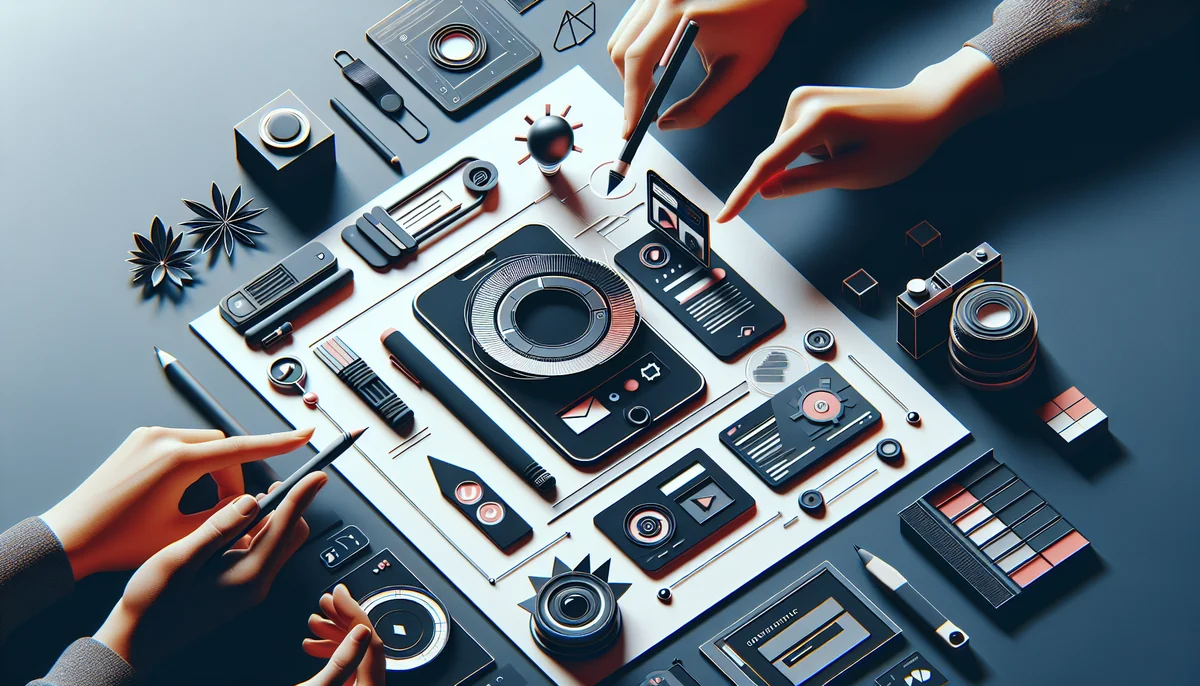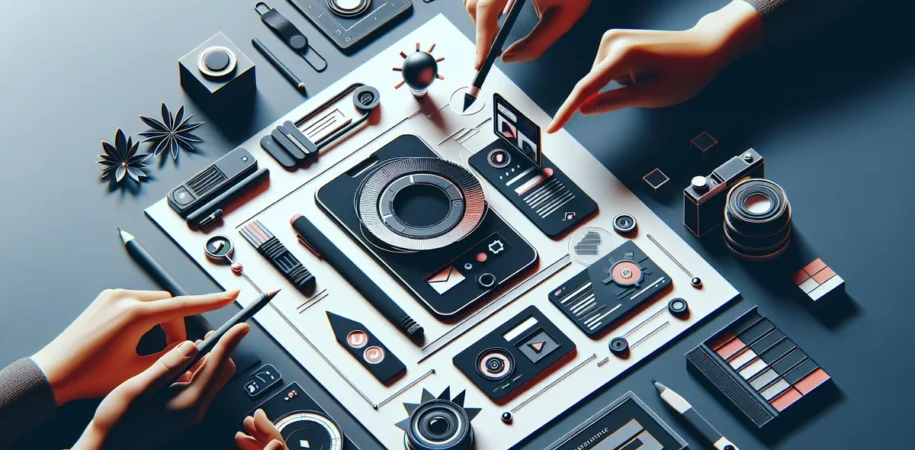10 Web Design Inspiration Ideas to Boost Creativity
In the competitive landscape of web design, staying ahead requires continuous creativity and innovation. Professionals are constantly seeking inspiration to create designs that not only resonate with users but also stand out in a crowded marketplace. Here, we delve into ten web design inspiration ideas that can help professionals unlock their creative potential.
Embrace Minimalism
Minimalism in web design is more than just simplicity. It’s about focusing on the essentials and removing distractions, which allows the core message to shine. By adopting a minimalist approach, designers can create a clean and user-friendly interface that enhances user experience. A notable example is Apple’s website, which employs minimalistic design to highlight product features without overwhelming visitors. The benefits of minimalism extend beyond aesthetics; it also improves load times and navigability, crucial factors in retaining user interest.
Effective Use of White Space
White space, often referred to as negative space, is a powerful tool in web design. It helps to balance elements and improve readability. A well-structured layout with ample white space can guide users through content seamlessly. For instance, Google’s homepage effectively uses white space to direct focus to the search bar, enhancing user interaction. The challenge lies in striking a balance to ensure the design remains engaging yet uncluttered. Best practices include using white space strategically around key elements to draw attention whilst maintaining a cohesive design. What a Web Designer Really Earns and Why It Matters

Professional illustration for 10 Web Design Inspiration Ideas to Boost Creativity
Incorporate AI and Machine Learning
AI and machine learning are transforming web design by offering personalised user experiences. These technologies enable designers to analyse user behaviour and tailor content accordingly. By integrating AI, web designs can become more intuitive and effective. A case study of Netflix illustrates this well, as its recommendation system uses AI to present content that aligns with user interests, significantly enhancing user satisfaction. The challenge is to implement AI ethically, ensuring user data is protected whilst maximising engagement.
Predictive Personalisation
Predictive personalisation uses algorithms to anticipate user needs. This approach enhances engagement by delivering content that resonates with individual preferences, thus fostering a deeper connection with the audience. Amazon is a pioneer in this realm, with its recommendation engine accounting for 35% of its total sales. The key to successful predictive personalisation is data accuracy, ensuring that the predictions are relevant and valuable to the user.
Leverage Bold Typography
Typography is a crucial element in web design that can convey the brand’s personality. Bold fonts capture attention and are effective in highlighting important information. When used judiciously, bold typography can make a design visually striking. The New York Times utilizes bold typography to draw attention to headlines, creating a hierarchy that guides the reader through the content. However, overuse can lead to visual clutter, so it’s important to maintain a balance between bold and regular fonts for clarity. How Smart Branding Can Skyrocket Your Business Success
Contrast and Clarity
Using contrasting fonts enhances readability and ensures the message is clear. Pairing bold headers with simple body text creates a visual hierarchy that guides the user’s eye through the content. For instance, Medium’s use of contrasting typography enables readers to easily differentiate between article titles and body text, enhancing readability. The best practice is to select fonts that complement each other whilst maintaining distinct roles within the design.
Explore Colour Psychology
The strategic use of colour can influence user emotions and behaviours. Understanding colour psychology enables designers to choose palettes that evoke the desired response from users. A well-thought-out colour scheme can enhance brand perception and user interaction. For instance, brands like Coca-Cola use red to evoke excitement and energy, which aligns with their brand image. Designers should consider cultural differences in colour perception to ensure the intended message is universally understood.
Harmonious Colour Palettes
Creating a harmonious colour palette involves selecting complementary colours that work well together. This not only improves aesthetics but also ensures a cohesive look and feel across the website. Adobe Colour CC is a useful tool for designers to create harmonious palettes that enhance visual appeal whilst maintaining brand consistency. Challenges include ensuring accessibility, as colour combinations must be chosen with care to accommodate users with visual impairments.
Implement Responsive Design
With the proliferation of mobile devices, responsive design has become essential. It ensures that websites function seamlessly across various screen sizes, providing a consistent user experience. Responsive design is critical for maintaining user engagement and improving SEO. Google prioritises mobile-friendly sites in search rankings, making responsive design not just preferable but necessary. The challenge is to maintain functionality and aesthetics across diverse devices, which requires thorough testing and iterative improvements. How Strong Branding Can Transform Your Business
Fluid Grids and Flexible Images
Responsive design relies on fluid grids and flexible images. These elements adapt to the user’s screen, ensuring the design remains intact regardless of the device used. Websites like Starbucks employ fluid grids to maintain a consistent look across devices, ensuring a seamless user experience. Best practices involve using scalable vector graphics (SVGs) and CSS media queries to ensure images and layouts adapt fluidly to screen changes.
Utilise Micro-Interactions
Micro-interactions are subtle animations or design elements that provide feedback to user actions. These enhance user experience by making interactions more engaging and intuitive. They can be as simple as a button changing colour upon hover. Micro-interactions are widely used by social media platforms like Twitter, where the like button animation provides immediate feedback, enhancing user satisfaction. The challenge is to ensure these interactions are not distracting but rather enhance the user journey.
Enhancing User Engagement
Micro-interactions play a crucial role in enhancing user engagement. They provide immediate feedback, making the interface feel alive and responsive, thereby improving the user experience. The key is to keep them subtle and meaningful, ensuring they add value to the interaction rather than detract from it. Using micro-interactions thoughtfully can also improve conversion rates by guiding users towards desired actions.
Incorporate Video Backgrounds
Video backgrounds can add depth and dynamism to a website. They capture user attention quickly and are an excellent way to convey complex messages succinctly. However, it’s essential to ensure that videos do not compromise site speed. Websites like Airbnb use video backgrounds effectively to showcase destinations, enhancing the storytelling aspect of their design. The challenge is balancing video quality with load times, as slow-loading videos can deter users.
Optimising Video Content
When using video backgrounds, optimisation is key. Compressing video files and using HTML5 video formats can help maintain performance whilst delivering rich content. The use of lazy loading techniques ensures videos only load when needed, preserving bandwidth and improving user experience. Tools like HandBrake can aid in video compression without significant quality loss, crucial for maintaining site speed.
Focus on Accessibility
Ensuring that web designs are accessible to all users is not just a legal requirement but also an ethical responsibility. Accessibility features like alt text for images and keyboard navigation can make websites usable for individuals with disabilities. The BBC’s website serves as an exemplary model by adhering to accessibility standards, ensuring content is available to all users. The challenge lies in integrating accessibility without compromising design aesthetics, which requires thoughtful planning and execution.
Inclusive Design Practices
Inclusive design involves considering diverse user needs. This includes providing text alternatives for non-text content and ensuring sufficient colour contrast for readability. Microsoft’s inclusive design toolkit offers guidelines to help designers create accessible content that accommodates a wide range of users. The best practice is to conduct regular accessibility audits to identify and rectify potential barriers, ensuring inclusivity remains at the forefront of design.
Explore Asymmetrical Layouts
Asymmetrical layouts break away from the traditional grid, creating a dynamic and engaging design. This approach can add visual interest and guide users’ attention creatively. Websites like Dribbble use asymmetrical layouts to present portfolios in an innovative manner, capturing user interest. However, the challenge is to maintain balance and coherence, ensuring the layout is visually appealing without causing confusion.
Balancing Elements
Whilst asymmetry can add interest, it’s crucial to balance elements to maintain harmony. A thoughtful arrangement ensures that the design remains visually appealing without causing confusion. Techniques like using a focal point or aligning elements strategically can help maintain balance within an asymmetrical design. Best practices include testing with users to ensure the layout is intuitive and meets their needs.
Conclusion: What Inspires You?
Web design is an field where creativity plays a pivotal role. By exploring diverse inspiration sources, designers can push boundaries and create innovative solutions. These ten ideas serve as a foundation for sparking creativity and fostering innovation.
Finally, as you embark on your next web design project, consider incorporating these strategies to elevate your work. Whether it’s through embracing minimalism or integrating AI, the possibilities are endless. What will inspire your next design?


